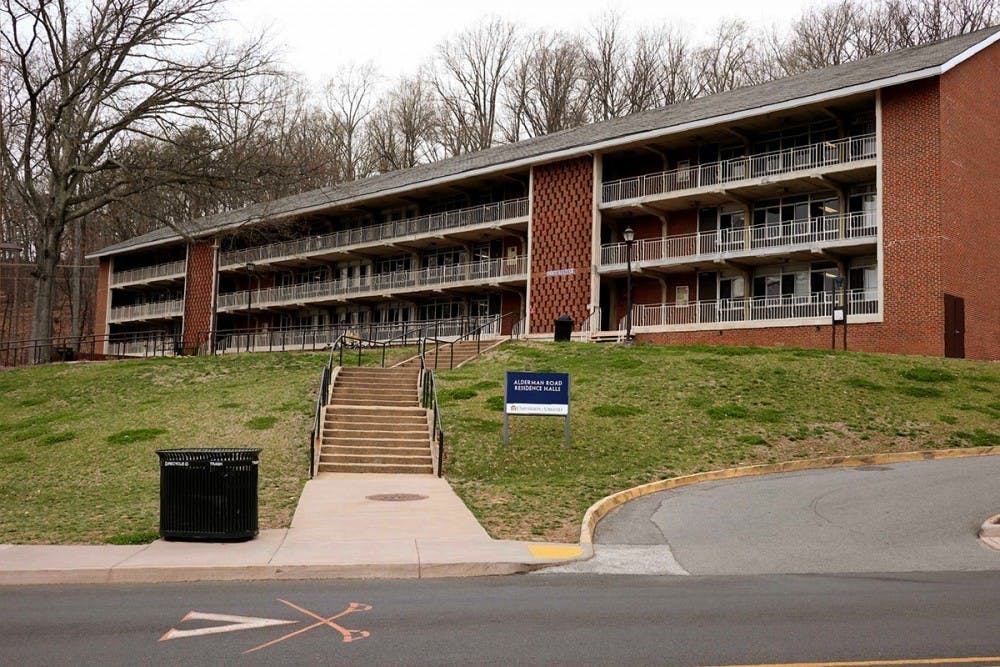I remember waking up to an email from Housing and Residence Life in early July. I had been assigned to Courtenay House — colloquially known as one of the “motels” — for my first-year housing assignment. When I mentioned it to some of my upperclassmen friends, they laughed and told me it might be rough, but that I would survive. On move-in day, my family arrived to find it a little dusty — or so we thought. By late September, my roommate and I would come to learn that the “dust” — in our cabinets, closets, drawers and on our AC unit — was actually mold. We were not the only students on Grounds to make this unsettling discovery.
Recently, it was confirmed that there are mold issues across some of the older first-year residence halls — Courtenay, Fitzhugh, Dunglison and Woody-Cauthen are all infested. Along with reports of mold, students have also shared their experiences with possible mold-related health problems and interactions with Housing and Residence Life. HRL is completing the removal and investigation into the mold to determine its cause, but comments from students reveal frustration over HRL’s response, especially because some of the action taken by the organization has not reflected its stated intent. Simply put, HRL’s response not only reveals that it was not proactive in detecting mold from the start, but that it still cannot adequately respond to these issues.
Finding mold in my Courtenay room was like playing a game of whack-a-mole — every time I found mold and cleaned it, my search would only reveal a more extensive problem. The amount of time I spent with a flashlight and a disinfecting wipe at the depths of my closet made me wonder, “should I really be the one responsible for this?” But along with more discoveries of mold, I found several clothing items of mine and my roommate’s that had been affected by the infestation. My resident advisor told me that a response from HRL would be coming in the days ahead, and that in the meantime I should file a work order for my affected clothes.
Finally, weeks after my resident advisor and senior resident had been meeting with University administration trying to come up with a response — HRL sent an email to residents that said the mold was isolated and not a part of a widespread issue. There was no evidence or explanation of how they determined this to be true. It also said that student behavior — such as leaving windows open, storing wet clothes and obstructing HVAC units — should change to prevent mold from growing, and that if any mold is detected one should file a work order. My resident advisor relayed a message to me that Facilities Management and HRL gave to our senior resident, which detailed many steps that FM and HRL plan to take in the motel dorms — Courtenay, Dunglison and Fitzhugh. These consisted thoroughly inspecting all interior spaces for mold and looking for leaks, resolving any issues regarding leaks, checking all HVAC systems for functionality, cleaning or replacing HVAC filters and components, cleaning any surfaces found to have microbial growth and documenting any behavioral factors that could be contributing to such growth.
As a resident in the above mentioned dorms, I can confidently say that it does not appear Facilities Management took these steps across the board. When workers showed up to clean mold weeks after we first detected and reported it, they asked us where we had identified mold. While I had already cleaned most of it myself, there were some hard-to-reach spaces that I was very grateful they came to clean. If Facilities Management was being assessed on its spot treatment based on resident accounts alone, it would pass with flying colors. But was a thorough inspection for origins of mold or any spaces with more mold present performed? Absolutely not. When I asked one of the maintenance workers where else there might be mold present, they replied simply with “anywhere.” There was no inspection of our HVAC system — which had previously had mold on it — and there was no guidance provided regarding behavior factors that could be contributing to the microbial growth.
There are many reasons that this situation has been upsetting for residents. Perhaps it is the more than $7,000 that the University charges for on-Grounds housing as a first-year student. Or maybe it is the health problems that I — and not I alone — have experienced in conjunction with the presence of the mold. It has even been reported that a student was hospitalized with health issues. But by far the most upsetting reason is the feeling that a serious health concern is going unnoticed or ignored in my home. The previously mentioned work order I filed to have my clothes cleaned was recently resolved with a notice saying service is “no longer needed,” when no one from Facilities Management or HRL ever arrived to discuss the issue.
I am still left with lingering questions — why was this not addressed before students arrived on Grounds, and why are they not addressing it now? Making rounds of the dorms to check for mold before residents moved-in seems like a fairly simple task that could have alleviated a great deal of stress and work for both students and maintenance employees. This situation also comes as the University ponders expanding housing for second-years to live on Grounds. But based on recent developments, in no way should the University be focusing on expanding housing when it cannot adequately maintain the housing it currently has.
Ford McCracken is a Viewpoint Writer who writes about University administration for The Cavalier Daily. He can be reached at opinion@cavalierdaily.com.
The opinions expressed in this column are not necessarily those of The Cavalier Daily. Columns represent the views of the authors alone.







